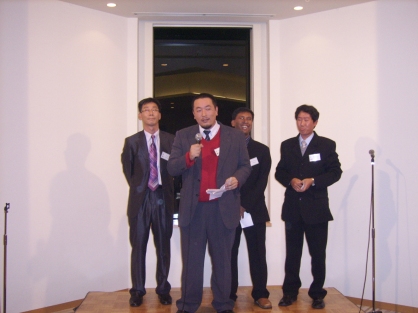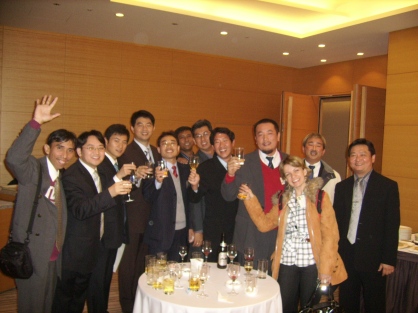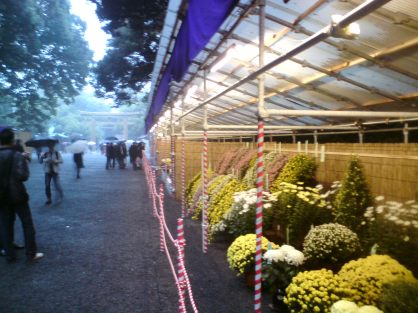Tokyo
December 1, 2008
It was a “management development seminar”, focusing on communication skills, but I was not convinced. It could have been a way for management to reward its staff, it could have been something nobler as in helping overseas managers build links with the head office and with each other, in which case I was throughly impressed with the organization of the seminar, not that it improved or not improved our communication skills by the end of the week, but by the fact that Kurita Water Industries saw the need to hold such annual events. During the course of the week, much more than the actual course work itself, I was impressed by the organisers, felt their zeal, and was motivated even more by them.
I forged fast friendships with most of the participants, but at 36 I was probably one of the oldest managers, and felt the need to set an example, to raise the bar. I spread myself around, simultaneously translating mandarin, english, portuguese and japanese (by the end of the week, it was as if my brain had taken a hallucigenic trip, and was fried), to help with the coursework, to lead. Since my college days, I have constantly motivated myself to break out of the shy asian mould; to be more assertive, to be vocal, to take the lead, befitting a background that was not my choosing; the eldest son, the college-educated, the manager.
+++++++++
Tokyo, with the passing years, has diminshed in its mystique, or at least, ceased to be a “difficult” city for me. In the past, everytime I visit, I felt foreign, and with every step an imaginary reel in which Wim Wenders would be narrating the search for a lost Ozu paradise, and with every other step, the feeling that one’d not be able to keep up with the bustling crowds, the assault of neon signs and product signs screaming “shin-hastu-bai” (new products in market), and constant reminders that this is a city of the future, that you do not belong. My paradigm shift occured this time with a little more courage than usual – the renewed ability to shout out a demand for tea or extra cabbage in a tonkatsu shop, for nothing is more Japanese.
For as long as I remember, any Tokyo visit starts with a pilgrimage to the Meiji Shrine off Harajuku. I’d step off the train to be accosted by the sight of the most fashionable people in Japan (though decidedly youngish, camp and/or daring), then trek up to the giant torii gate, through its impressive pillars(centuries old, smooth as glass, and felled from a single tree), and down its broad, gravel path lined with massive oak. As you progress, the sounds of the city become increasingly distant, and the feeling of encroachment upon medieval history increases, nothing but the sound that stones make as you crush them underfoot. You past families fully decked in traditional kimonos and wooden getas, sometimes foreigners stopping them for photo opportunities. Nearing the shrine, the scent of incense wafts by. You’d stop right at the main entrance, where a well slowly overflowing with spring water offers visitors a moment to sanctify themselves. It’s a ritual I, even as a atheist, indulge in, soaking in the magic of it all.
At the shrine, I toss in a 10-yen coin, clap my hands twice, and prayed solemnly, as I always do, for peace.


